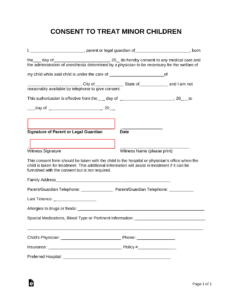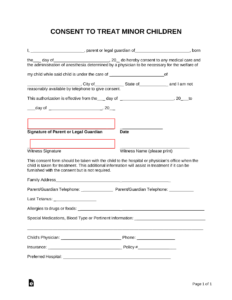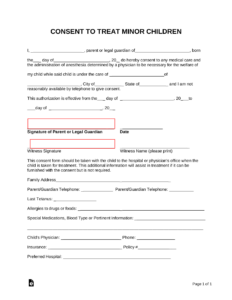In the dynamic world of project management, it’s a rare project that sails smoothly from start to finish without a single bump. Whether you are building a skyscraper, developing software, or organizing a community event, challenges are an inherent part of the journey. These challenges, often called issues, can range from minor snags to significant roadblocks that threaten to derail your entire project.
Successfully navigating these issues is a hallmark of an effective project manager. It’s not about avoiding problems entirely—that’s often impossible—but rather about having a robust system in place to identify, track, and resolve them efficiently. This is precisely where a well-structured project management issue log template becomes an indispensable tool, transforming potential chaos into manageable action items.
What Exactly is an Issue Log and Why Do You Need One?
At its core, an issue log is a formal document or register that systematically records and monitors every problem, obstacle, or question that arises during a project’s lifecycle. Think of it as your project’s dedicated problem-solving journal. Instead of issues being discussed once in a meeting and then forgotten, they are captured, assigned, and tracked until they are officially resolved. It’s a proactive approach to managing the unpredictable nature of projects.
The necessity of an issue log stems from several critical project management principles. First, it ensures nothing falls through the cracks. In a busy project environment, it’s easy for small issues to escalate into major problems if they aren’t properly acknowledged and addressed. Second, it fosters transparency and communication among team members and stakeholders. Everyone can see the status of pending issues, who is responsible, and what actions are being taken. This clarity minimizes misunderstandings and keeps everyone on the same page.
Beyond immediate problem-solving, an issue log serves as a valuable historical record. Once a project concludes, this log becomes a rich source of lessons learned, helping future projects avoid similar pitfalls. It also provides an audit trail, which can be crucial for accountability or during post-project reviews. Without a formalized system like a project management issue log template, you are essentially flying blind, reacting to problems as they hit rather than strategically managing them.
The Benefits of a Well-Maintained Issue Log
- Improved Communication: Provides a central, accessible point of truth for all issues, ensuring everyone is informed.
- Faster Resolution: Promotes timely action by assigning ownership and setting clear expectations for resolution.
- Enhanced Accountability: Clearly identifies who is responsible for addressing each issue, fostering a sense of ownership.
- Risk Mitigation: Often, issues are early indicators of potential risks. Addressing them promptly can prevent larger problems.
- Better Decision-Making: Offers data-driven insights into recurring problems or areas of concern within the project.
Common Elements You’ll Find in an Issue Log
While a project management issue log template can be customized, most effective templates share a common set of fields that provide comprehensive tracking information. These typically include:
- Issue ID: A unique identifier for easy referencing.
- Description: A clear and concise explanation of the problem or question.
- Date Raised: The date the issue was first identified.
- Raised By: The individual or team who reported the issue.
- Priority: How critical the issue is (e.g., High, Medium, Low).
- Severity: The potential impact of the issue if not resolved.
- Status: The current state of the issue (e.g., Open, In Progress, Resolved, Closed).
- Owner: The person or team assigned to resolve the issue.
- Resolution: A description of the actions taken to resolve the issue.
- Date Closed: The date the issue was fully resolved and closed.
- Comments: Any additional relevant notes or context.
Each of these elements plays a vital role in ensuring that an issue is not just acknowledged but actively managed. From initial identification to final resolution, these fields provide a structured framework for tackling project challenges head-on. A robust project management issue log template is not just a form; it’s a dynamic tool that empowers teams to confront and overcome obstacles effectively.
Crafting Your Own Project Management Issue Log Template
Creating your own project management issue log template doesn’t have to be an arduous task. While there are countless pre-made templates available online, the real power comes from tailoring one to your specific project’s needs and your team’s workflow. Starting with a basic structure and then adapting it is often the most effective approach. The goal is to build a tool that your team will actually use, not just another document that sits untouched.
Begin by considering the size and complexity of your projects. A small internal project might only need a simple spreadsheet, while a large, multi-stakeholder endeavor might benefit from a more sophisticated system within a project management software. The key is to select a platform that is accessible to all relevant team members and easy to update. Consistency in logging issues is far more important than the fanciness of the tool itself.
Once you have your platform, populate your template with the essential fields we discussed earlier. Encourage your team to provide clear, concise descriptions of issues. Vagueness can lead to delays and misinterpretations. Establishing clear definitions for priority and severity levels can also be incredibly helpful, ensuring everyone understands the urgency and potential impact of a given issue. Remember, the template is a living document and should evolve as your project progresses and you learn what works best.
Finally, the effectiveness of any project management issue log template hinges on its consistent use. Make it a standard part of your project meetings to review open issues. Assign an owner for each issue and set realistic target dates for resolution. Regular follow-ups and clear communication about the status of each item are crucial for maintaining momentum. A well-designed and consistently utilized issue log is more than just a tracking sheet; it’s a powerful mechanism for driving project progress and ensuring successful outcomes.
Embracing a systematic approach to managing problems is not just good practice; it’s a cornerstone of successful project delivery. By giving every issue a place to live, a person to own it, and a process for resolution, you transform potential chaos into an organized workflow. This dedication to tracking ensures that no challenge, big or small, goes unnoticed or unresolved, keeping your project on its intended path.
Ultimately, the ability to anticipate, identify, and swiftly address issues is what sets successful projects apart. Equipping your team with a clear, functional framework for issue management allows everyone to contribute to problem-solving, fosters a culture of accountability, and significantly increases your project’s chances of achieving its goals. It’s about building resilience into your project plan, one resolved issue at a time.



